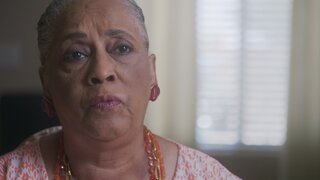Create a free profile to get unlimited access to exclusive videos, breaking news, sweepstakes, and more!
Being Black And Missing: How Race Factors In Disappearance Cases
Phoenix Coldon was a beautiful, young woman who vanished nearly seven years ago, but her case sparked little media attention.

Phoenix Coldon was a beautiful, bright, young woman with her whole life ahead of her when she vanished one December afternoon in 2011 under mysterious circumstances. But her disappearance sparked little media attention.
Investigative reporter Shawndrea Thomas believes one of the reasons for the lack of media attention was due to Coldon's race as a black woman.
While she doesn't believe members of the news media intentionally ignored the case, she does believe that Coldon's race and the lack of diversity in newsrooms across the country has a direct impact on which stories are ultimately covered.
"We just don't have enough people in place to help fight for those stories and help make those decisions and make the right decisions and cover things the right way," Thomas said, who takes an in-depth look at Coldon's case in the upcoming Oxygen special event "The Disappearance of Phoenix Coldon," premiering November 3 at 7/6c.
The lack of diversity in newsrooms across the United States, whether it's among reporters, managers, producers or those assigning out stories, can mean that sometimes missing persons cases involving people of color can be overlooked, she said.
According to Thomas, the voices in a newsroom should reflect all aspects of a community and should include people of all sizes, lifestyles and races, but in many newsrooms that is still not the case.
Late PBS journalist Gwen Ifill even coined the phrase "missing white woman syndrome" to describe the phenomenon around the increased media coverage given to white female victims.
Coldon has been missing for nearly 7 years; however, the amount of attention the story has received pales in comparison to the disappearance of Mollie Tibbetts, who was missing just over a month this summer before her body was found in a field in Iowa and Cristhian Bahena Rivera was arrested for the crime.
Both women were close in age—Tibbetts was 19 and Coldon was 23 at the time of their disappearances— both had vocal family members and both disappeared under puzzling circumstances, leaving many of their personal belongings behind. Tibbetts had vanished while out on a run in her rural hometown of Brooklyn, Iowa, while Coldon's car was found abandoned, still running, with the door open in the middle of a road in East St. Louis.
Yet, Tibbetts case received frequent national media attention and regular press conferences held by investigators.
The trend can even be documented in recent studies. Zach Sommers, a sociologist at Northwestern University, studied missing person coverage of four online media outlets in 2013 and concluded that white women were significantly more likely to receive media coverage relative to their proportion among missing persons, according to a 2017 NPR article.
"By choosing to disproportionately highlight the experiences of whites and women, these four news websites are implicitly — or perhaps explicitly — intimating that the cases of those individuals matter more," he wrote in the study.
Had Coldon's case received the same type of attention early into her disappearance that Tibbett's case received, it could have significantly altered the course of the investigation.
"I think it would have helped a lot," Thomas said. "People were more open to talking at that time."
In recent years, the conversation about race and its impact on an individuals' experience and treatment by others has reignited across the country, slowly altering media coverage.
Thomas calls it "the Ferguson effect," referring to the 2014 protests and riots that broke out in the St. Louis area after Michael Brown, an unarmed black teenager was shot and killed by a white police officer, who was not indicted for the death.
"After Ferguson happened, people become more heightened and sensitive to black issues in this area, so you started to see more stories about missing people of color on the air. It wasn't so hard to get those stories on the air after that," Thomas said.
She hopes that by continuing the conversation and adding more diverse faces to newsrooms across the country, progress will continue and women of color will get "fair exposure" in the media.
"I would hope that there would be a day that you wouldn't have to point out the fact that someone is black, just point out the fact that someone is missing," she said.
[Photo: Provided by Coldon family]


















